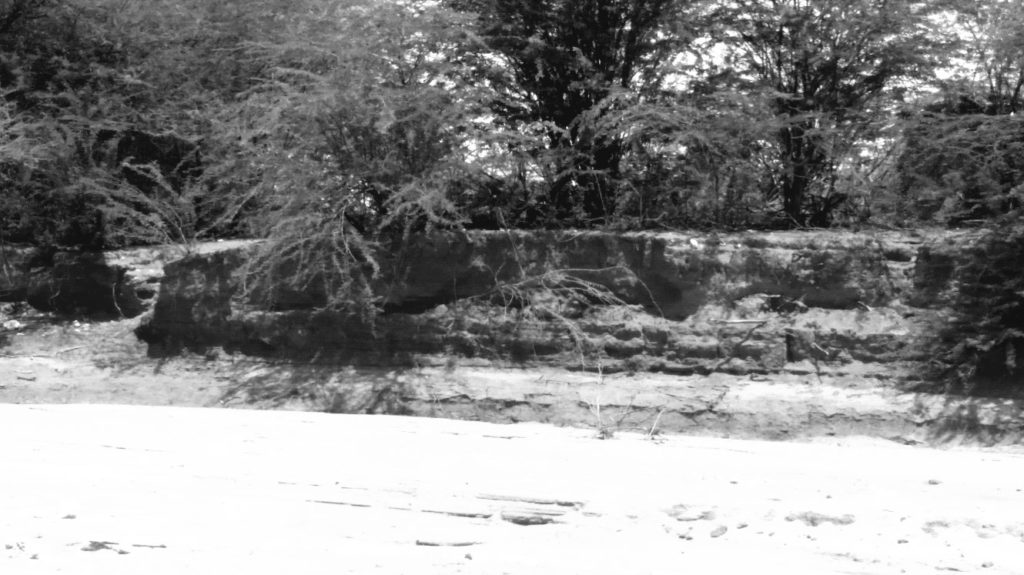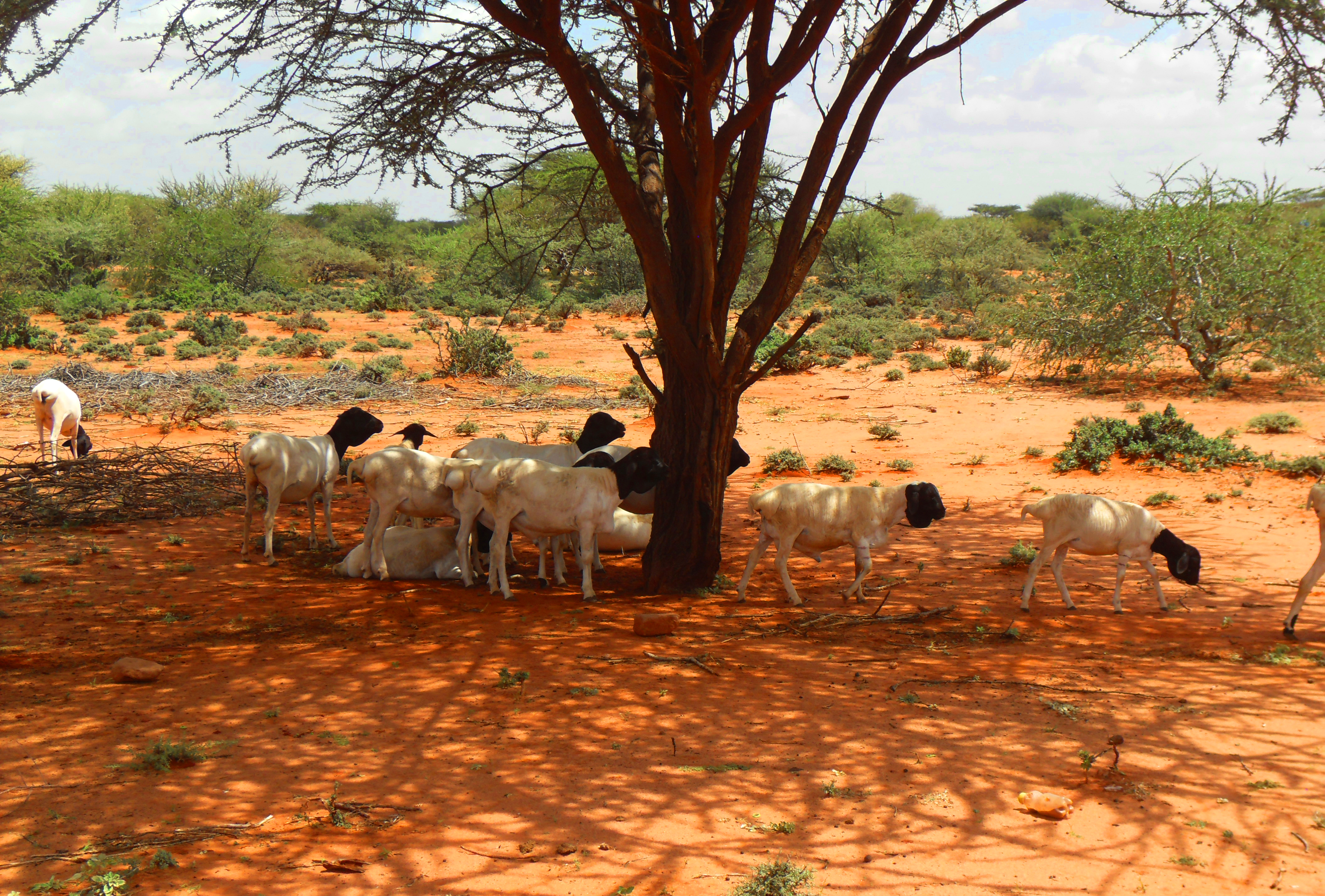by Dr Muna Ismail
Droughts have long been part of the Somali peninsula’s climate and, in most cases, have always had significant economic, environmental, and social impact, both direct and indirect. In cultural anecdotes, all past droughts in living memory have names that tell social stories or peculiarities that were identified in such times. The names given not only highlighted the severity of the drought but normally captured the prevailing social traumas and the collective survivability of hard times in the psyche of society for generations to come.
Causes and consequences of drought
One of the worst droughts in the last century, known as Xarama-cune (eating-the-forbidden) occurred in the period 1913-14. Cited by many elderly people in Somaliland, it was a time when severe famine swept through many pastoralist regions, resulting in catastrophic losses of lives and livelihoods. To survive, people ate anything they could find, hence the name.
Pastoral communities living in dryland ecosystems have historically shown ways of coping and absorbing shocks of droughts or effects of famine within their natural ecology. However, in the past 4 decades, droughts in Somalia have become a major problem causing depletion of resources, environmental degradation, impoverishment, loss of livelihood and forced migration. The frequency of droughts, however, has particularly increased in the last two decades with climatic variability which has become more extreme in the Horn of Africa.
Generally, at the macro level the climate in the Horn is influenced by El Niño’s warm and cold cycles of sea-surface temperatures in the eastern, central Pacific Ocean. The average rainfall in the Somali peninsula is 100-150 mm, but the El Niño episodes which occur every 3-7 years are known for being associated with below-normal rainfall in the Horn. Since 2011, four consecutive years of extreme weather cycles resulting in droughts, soaring temperatures and flash floods have hit all the countries in the Horn. Somalia has fared worst in terms of the increased societal vulnerabilities and fragility of the natural ecology. Somalia was hit hard in 2011. An estimated 4.6% of the total population and 10% of children under 5 years old died in southern and central Somalia. (UNOCHA report July 2011).
Understanding vulnerability
To fully understand the vulnerability of the Somali population to droughts in either Somaliland or the Federal regions of Somalia we need to understand the concurrent impact of bio-physical and socio-economic drivers. Bio-physical drivers such as change in land use, climate variability, and invasive species all have a severe impact on the ability of the population to survive drought. Hence vulnerability depends on a number of factors including population size, social behaviour, economic development, land policies and water management.
The pattern of drought in the Somali region has always been that famine would most likely follow a period of severe dryness which is often the case when rains fall short in two consecutive years. However, one may argue that what causes famine and vulnerability to droughts may not be totally dependent on a decline of food and feed availability and loss of livelihoods such as through loss of livestock in pastoral households. But rather depend on human capabilities deficiency because there is no social opportunities and structures, e.g. institutional support which can expand the realm of human agency and freedom (Drèze and Sen 2002) . The word social opportunity is a useful reminder not to view individuals and their opportunities in isolated terms. We have to understand that a person or a pastoralist households greatly depend on relational networks, natural ecology, having equality in accessing and negotiating in markets. As well as on the capacity of the state to provide measures to safeguard the livelihoods of the population through institutions and influences of effective public policies.
In early-mid 1970s the Daba-dheer (long tail) drought in pastoral east and central Somaliland prompted the Somali government, with the help of the Soviet Union, to resettle a large number of distressed nomads in the agricultural lower Shabelle and middle Jubba regions. This was a huge national programme that saved a vulnerable population while helping to diversify their livelihoods with new skills in fishing and agro-pastoralism.
Designing effective solutions
In the absence of local and regional capabilities in Somaliland or in the southern Somalia regions of Bay and Bakool, where the present drought is most severe and causing population displacement, short term humanitarian interventions to avert catastrophic outcomes or to at least ameliorate its impact are needed urgently. Such efforts help people with an immediate need for food and shelter but do not address the long-term impacts of recurrent droughts. Long-term strategies to help both pastoral and agro-pastoral communities throughout the Somali peninsula to build resilience for climate change is the only rational way. These do not exist in the present framework of humanitarian assistance.
To address the long-term solution, we may need to consider how the following could feature in drought-risk management:
- Concerted efforts backed-up by community-focused land policies to safeguard the long-term tenure and resource-rights of the rangelands as common and shared land.
- Diversification of income and the introduction of drought-resistant crops that can provide food and fodder, such as the restoration of the Yeheb plant in the Haud grassland.
- Wide-ranging intervention targeting agricultural and pastoral communities’ need to adapt to climate change.
- Sustainable land use practices allowing physical recovery of forested areas and rangelands as well as the reduction of soil erosion.
- Building the capacity of state and local governance structures to address the need for sustainable natural resource management (NRM) that would build on the existing capacity of clan and village structures.
Drèze, J and A.K.Sen (2002) India, Development and Participation. New Delhi, New York: Oxford University Press
Conclusion
Droughts generally remain the main threat to Somalia and Somaliland’s human security in any period of post-conflict development and peace. It contributes directly to malnutrition in children and vulnerable adults as well as preventing people from overcoming hunger and poverty. Hence comprehensive risk-management strategies that focus on building long-term resilience in the population are required urgently.
Land Degradation: The case of Somaliland
During a scoping mission for the reintroduction of the Yeheb bush [see page 4 of Journal Issue 60] we encountered many examples land degradation in Togdheer and Sanaag: loss of vegetation, gully erosion, loss of topsoil, the invasive species (Prosopis juliflora) [see page ], the demise of frankincense and juniper forests and wide-ranging ecosystem degradation. They are all having a negative impact on traditional livelihoods.

Climate change-induced ecological stresses, the increase of human and livestock populations and changes in the national and global economies, are the main concerns of people we met. They realise they are influencing the changing patterns that have been occurring in land use. These land use changes have a negative impact on the land resources (soil, vegetation). In places we visited, land resources are being stretched beyond the land’s natural ability to recover and there is a serious case for rangeland restoration.
The economy of Somaliland is heavily dependent on ecosystem services with its most significant source of economic wealth being livestock. 65% of the population depend either directly or indirectly on livestock or livestock products for their livelihood. Crop husbandry provides subsistence for about 20% of the population. Foreign aid and remittances from diaspora also play a significant role in the economy.
The role of the legal framework
Historically, there have been several laws introduced in Somaliland with regard to land management during colonial times and when the subsequent central Somalia government was in power [see article on page 6]. These laws brought demarcations and changes of land ownership from communal to individual, with negative consequences for livestock movement and grazing patterns. They are responsible for many of the problems exacerbating land degradation, particularly in relation to charcoal production.
Charcoal production was regularised before 1990, but after the collapse of the central government, it became a lucrative business that is causing serious land degradation. It has destroyed many of the acacia forests providing protective cover for the fragile soil. Such degradation was apparent in the gully erosion and topsoil loss we encountered in many areas we visited.
The Chairman of the Parliamentary Sub-committee on Natural Resources, Mr Said Warsame Ismail informed us during our visit that an Environment Act for Somaliland is proposed which will regulate many of the critical ecological land use issues in the country.
Part of the problem is that the general outlook of the population is primarily to draw maximum benefit from the ecosystem. Protection of the environment and a sustainable ecosystem is not a priority. Being a post-conflict state, 43% of Somaliland’s revenue goes to maintaining security within its borders. What remains from that limited revenue is not enough to cover the needs of the country. Hence there is a heavy dependency on International NGO development programmes. State institutions are weak.
Somaliland’s “Vision 2030” strategy recognises environmental protection as one of the five pillars earmarked for the national development agenda promoting ‘a stable, democratic and prosperous’ society. Sustainability is a guiding principle of this vision and highlights the preservation of natural resources.
However, there are major factors undermining the realisation of this vision. Soil erosion, deforestation, drought and climatic stress, overgrazing of rangeland, urbanisation, population growth and pollution (lack of waste management) all conspire against a sustainable ecosystem that can provide necessary goods and services to support viable growth, long term stability and peace.
This article was first published in the Journal of the Anglo-Somali Society Issue 61, Spring 2017, pages 17-19
Dr Muna Ismail is a Programme Manager for Initiatives of Change UK, and Vice-Chair of the Anglo-Somali Society. She is a scientist and environmentalist, with a passion for community action and sustainable development in Horn of Africa. In the last 4 years she has been training programmes for UK Somali and Horn of Africa Diaspora community groups.

